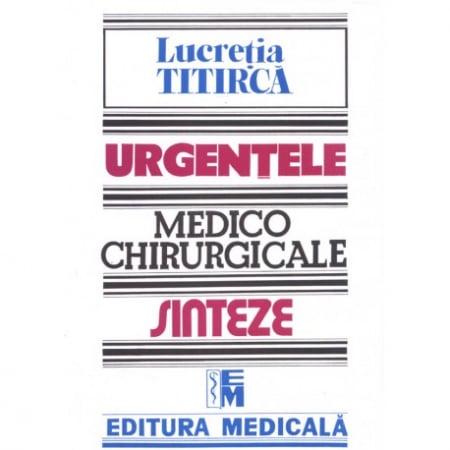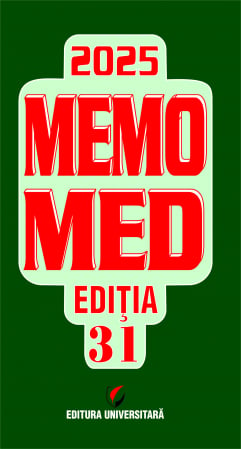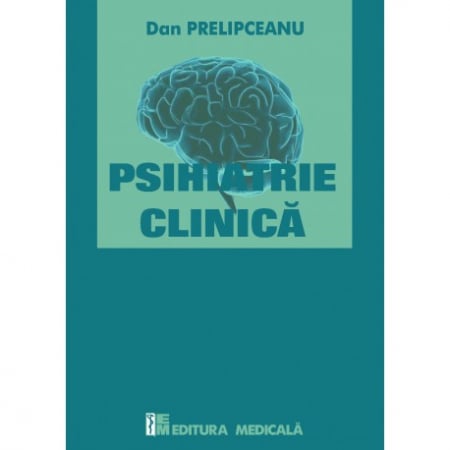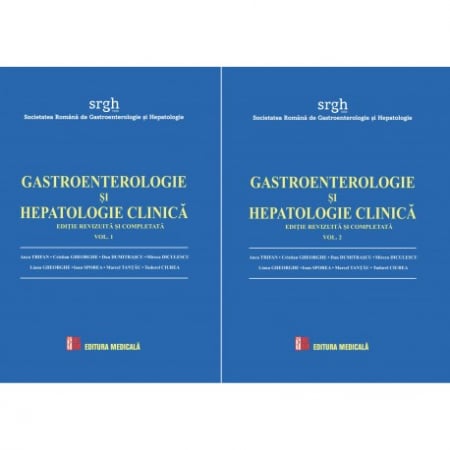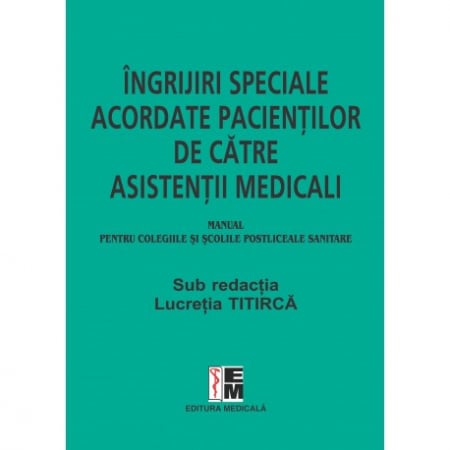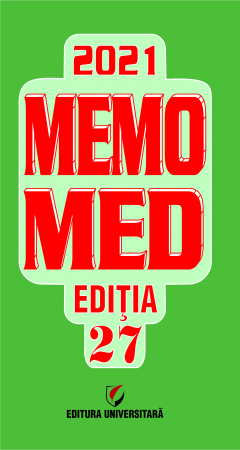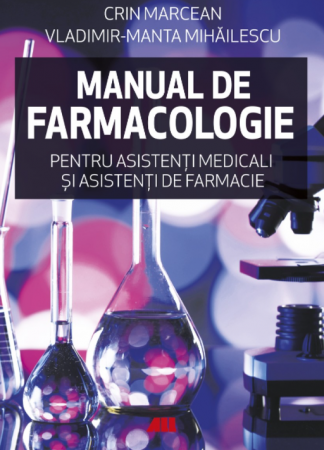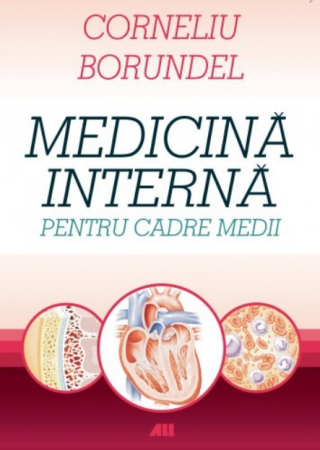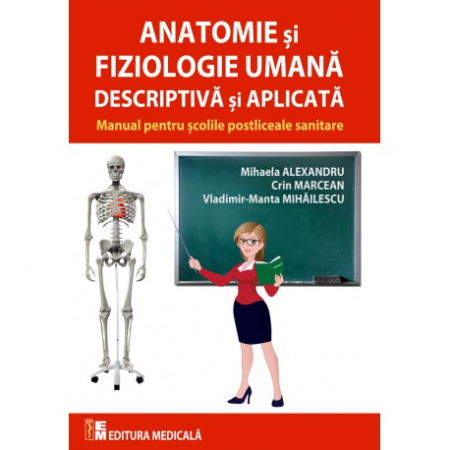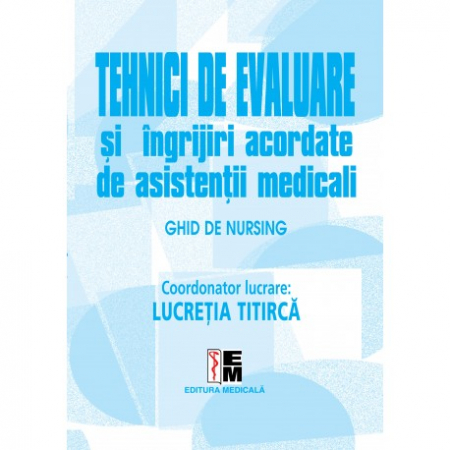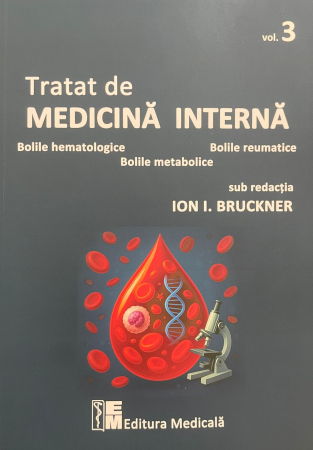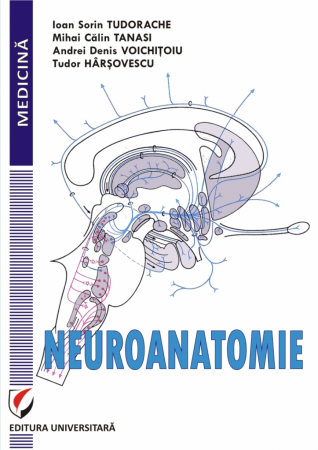Manuscript proposals: [email protected] / 0745 204 115 //// Tracking orders Individuals / Sales: 0745 200 357 / Orders Legal entities: 0721 722 783
ISBN: 978-606-28-1393-2
DOI: https://doi.org/10.5682/9786062813932
Publisher year: 2022
Edition: II
Pages: 254
Publisher: Editura Universitară
Author: Cristina Daia
Product Code:
9786062813932
Do you need help?
0745 200 357
- Description
- Download (1)
- Authors
- Content
- More details
- Reviews (0)
Electrotherapy is constantly evolving. Consequently, there are studies that validate or invalidate various scientific information, published at a given time. There are also many more and more advanced and technological medical devices. The role of the Physical Medicine and Rehabilitation (MFR) / Recovery, Physical Medicine and Balneology (RMFB) specialist is to first check the package leaflet of the purchased device and use it in accordance with the recommendations of the manufacturer of that device, integrating his knowledge in the field and appealing to the same time, to the specialized studies accessible at that moment.
The second edition is carefully corrected, revised, carefully typed and up to date.
Of course, I recommend replacing "Electrotherapy Practical Principles Edition I" with this edition.
Some problems still remain active, including specific contraindications to electrotherapy in various pathologies, which must be widely developed in another material. Here are just a few examples:
TECAR is a therapy proposed in different ways of operation and application by manufacturing companies. There are special devices, part of this range, which are indicated by the manufacturer to be recommended in fractures with osteosynthesis material, there are others that have this contraindication express in the leaflet. Consequently, it is a clear desideratum to carefully consult the manufacturer's instructions before recommending this therapy, depending on the device purchased and the existing studies at that time. It is, of course, up to the specialist to use each device according to its specifics.
The magnetic field, the electromagnetic field is a therapy generally contraindicated in fractures with osteosynthetic materials. However, there are devices in which the company producing magnetic field variants indicated in fractures with osteosynthesis material are indicated; but there are other devices that have this express contraindication. Consequently, here too I will specify to carefully consult the manufacturer's instructions and to recommend this therapy depending on the device purchased and the existing studies at that time.
Electrostimulation using low frequency current is increasingly used in the international literature in cancer patients. There are no such studies in Romania, known to me, until now, but it is up to the specialist to use them, as he considers.
LASER is not indicated in fractures with osteosynthesis material, but it has begun to be studied by some authors in fractures with osteosynthesis materials in animals, but not yet in humans. Studies do not show destructive local changes, on the contrary improvements, but only further extensive research can confirm and validate these observations.
The second edition is carefully corrected, revised, carefully typed and up to date.
Of course, I recommend replacing "Electrotherapy Practical Principles Edition I" with this edition.
Some problems still remain active, including specific contraindications to electrotherapy in various pathologies, which must be widely developed in another material. Here are just a few examples:
TECAR is a therapy proposed in different ways of operation and application by manufacturing companies. There are special devices, part of this range, which are indicated by the manufacturer to be recommended in fractures with osteosynthesis material, there are others that have this contraindication express in the leaflet. Consequently, it is a clear desideratum to carefully consult the manufacturer's instructions before recommending this therapy, depending on the device purchased and the existing studies at that time. It is, of course, up to the specialist to use each device according to its specifics.
The magnetic field, the electromagnetic field is a therapy generally contraindicated in fractures with osteosynthetic materials. However, there are devices in which the company producing magnetic field variants indicated in fractures with osteosynthesis material are indicated; but there are other devices that have this express contraindication. Consequently, here too I will specify to carefully consult the manufacturer's instructions and to recommend this therapy depending on the device purchased and the existing studies at that time.
Electrostimulation using low frequency current is increasingly used in the international literature in cancer patients. There are no such studies in Romania, known to me, until now, but it is up to the specialist to use them, as he considers.
LASER is not indicated in fractures with osteosynthesis material, but it has begun to be studied by some authors in fractures with osteosynthesis materials in animals, but not yet in humans. Studies do not show destructive local changes, on the contrary improvements, but only further extensive research can confirm and validate these observations.
-
Electrotherapy. Practical principles, 2nd edition
Download
CRISTINA DAIA
University studies:
- Faculty of General Medicine, University of Medicine and Pharmacy (UMF) "Carol Davila", Bucharest, graduated in 1999;
- Physiokinetotherapy, UMF “Carol Davila”, Bucharest, graduated in 2003.
Grades, qualifications, professional positions:
- Primary Care Physician - Recovery, Physical Medicine and Balneology, Neuro-Muscular Recovery Clinic, “Bagdasar Arseni” Emergency Clinical Hospital, Bucharest;
- Head of University Works UMF "Carol Davila", Bucharest;
- Doctor of Medical Sciences;
- Physiotherapist.
Scientific activity:
- Studies and scientific articles: 72 (32 ISI)
- Author / co-author in books / specialized textbooks: 10
- OSIM patents: 3
- International awards: 2, national awards - 3
Research activity:
- Team member of 5 completed research projects / grants
Professional companies:
- Vice President of the Romanian Society of Neuro-Rehabilitation (RoSNeRa), affiliated to the World Federation for NeuroRehabilitation (WFNR) and member of WFNR (since 2007);
- Vice President of the Romanian Society of Pathology, Therapy and Spinal Cord Recovery affiliated with the International Spinal Cord Society (ISCoS) and the European Spinal Cord Injury Federation (ESCIF).
University studies:
- Faculty of General Medicine, University of Medicine and Pharmacy (UMF) "Carol Davila", Bucharest, graduated in 1999;
- Physiokinetotherapy, UMF “Carol Davila”, Bucharest, graduated in 2003.
Grades, qualifications, professional positions:
- Primary Care Physician - Recovery, Physical Medicine and Balneology, Neuro-Muscular Recovery Clinic, “Bagdasar Arseni” Emergency Clinical Hospital, Bucharest;
- Head of University Works UMF "Carol Davila", Bucharest;
- Doctor of Medical Sciences;
- Physiotherapist.
Scientific activity:
- Studies and scientific articles: 72 (32 ISI)
- Author / co-author in books / specialized textbooks: 10
- OSIM patents: 3
- International awards: 2, national awards - 3
Research activity:
- Team member of 5 completed research projects / grants
Professional companies:
- Vice President of the Romanian Society of Neuro-Rehabilitation (RoSNeRa), affiliated to the World Federation for NeuroRehabilitation (WFNR) and member of WFNR (since 2007);
- Vice President of the Romanian Society of Pathology, Therapy and Spinal Cord Recovery affiliated with the International Spinal Cord Society (ISCoS) and the European Spinal Cord Injury Federation (ESCIF).
FOREWORD to first edition / 13 edition
FOREWORD to first edition / 15
FOREWORD to second edition / 17
FOREWORD to second edition / 19
I. PHYSIOTHERAPY. ELECTRO THERAPY / 21
I.1. Generalities of physiotherapy: Definition, classification, basic physical notions / 21
I.2. Types of currents used in electrotherapy / 25
I.3. General characteristics of the currents used in electrotherapy / 26
I.4. General contraindications to physiotherapy / 27
II. RECTIFIED CURRENTS / 29
II.1. Definition. Production methods / 29
II.2. Physical parameters of electric current pulses / 30
II.3. Classification of rectified currents / 33
II.4. Characteristics of rectified currents / 34
III. GALVANIC CURRENT (CONTINUOUS) / 37
III.1. Methods of obtaining / 37
III.2. Features / 39
III.3. Indications. Contraindications. Precautions for use CG / 44
III.4. Application methods / 45
III.5. Simple galvanizing / 45
III.5.1. Ways of application and prescription / 45
III.5.2. Simple CG formula / 50
III.6 Ionogalvanization / 51
III.6.1. General considerations / 51
III.6.2. Ionogalvanization formulas / 53
III.7. Galvanic baths / 55
III.7.1. Galvanic bath formulas / 55
III.7.2. Formula BG / 57
III.8. Galvanic current transcranial stimulation (tDCS) / 58
IV. LOW FREQUENCY CURRENTS / 60
IV.1. Diadynamic currents / 60
IV.1.1. Types of diadynamic currents and methods of obtaining / 60
IV.1.2. Features CDD / 65
IV.1.3. Indications and contraindications CDD / 66
IV.1.4. Ways of application and prescription CDD / 69
IV.1.5. Example, formula CDD / 71
IV.2. Exponential current / 73
IV.2.1. Definition / 73
IV.2.2. Principles of electrostimulation / 74
IV.2.3. Ways of application and prescription CE / 77
IV.2.4. Indications and contraindications exponential current / 81
IV.2.5. Example, formula / 82
IV.3. Transcutaneous electrical nerve stimulation TENS / 84
IV.3.1. Definition. Principle of electrostimulation / 84
IV.3.2. Electrostimulation parameters / 85
IV.3.3. Indications. Contraindications / 87
IV.3.4. Ways of application and prescription / 87
IV.3.5. Example, formula / 89
IV.4. Current TRÄBERT / 90
IV.4.1. Definition. Features / 90
IV.4.2. Indications. Contraindications. Precautions / 90
IV.4.3. Ways of application and prescription / 91
IV.4.4. Example, formula / 92
IV.5. Faradic current. Neopharyngeal current / 92
IV.5.1. Definition. Features / 92
IV.5.2. Indications. Contraindications. Precautions / 93
IV.6. Other forms of currents: HUFSCHIMIDT, LEDUC, HVT / 94 currents
V. MEDIUM FREQUENCY ALTERNATIVE CURRENTS / 96
V.1. Definition. Types of medium frequency currents / 96
V.2. Current medium frequency characteristics / 96
V.3 Medium frequency interference current / 99
V.3.1. Definition. Production methods / 99
V.3.2. Indications and contraindications / 103
V.3.3. Ways of application and prescription CIMF / 104
V.3.4. Form CIMF / 107
V.4. Russian Stimulation (KOTZ Current) / 110
VI. DEEP OSCILLATION / 111
VI.1. Principle of operation / 111
VI.2. Mechanism of action. Biological effects. Therapeutic effects / 111
VI.3. Application and dosage methods / 112
VI.4. Indications and contraindications "deep oscillation" / 117
VI.5. Example formula / 118
VIII. ELECTROMAGNETIC RADIATION (WHERE) / 119
VII.1. Basic physical notions related to electromagnetic radiation / 119
VII.2. Classification of electromagnetic radiation EMU / 119
VIII. HIGH FREQUENCY CURRENTS / 121
VIII.1. SHORT WAVES / 122
VIII.1.1. Generalities. Definition. Characteristics. Effects / 122
VIII.1.2. Application technique / 123
VIII.1.3. Indications. Precautions. Contraindications / 130
VIII.1.4. Example. Formula / 131
VIII.2. SHORT PRESS WHERE. DIAPULSE / 132
VIII.2.1. Generalities. Definition. Characteristics. Effects / 132
VIII.2.2. Indications. Contraindications / 132
VIII.2.3. Application technique for the diapulse device / 134
VIII.2.4. Example. Formula / 136
VIII.2.5. Other appliances / 136
VIII.3. MICROWAVE / 137
VIII.3.1. Generalities. Definition. Characteristics. Effects / 137
VIII.3.2. Indications. Contraindications / 139
VIII.3.3. Application technique / 140
VIII.4. WHERE LONG. TECAR / 140
VIII.4.1. Generalities. Definition. Characteristics. Effects / 140
VIII.4.2. Indications. Contraindications / 142
VIII.4.3. Tecar application technique / 143
IX. PHOTOTHERAPY / 146
IX.1. Infrared radiation / 147
IX.1.1. Generalities. Definition. Characteristics. Effects / 147
IX.1.2. RIR / 150 application technique
IX.1.3. Indications and contraindications RIR / 152
IX.2. Ultraviolet radiation / 153
IX.2.1. Definition. Classification / 153
IX.2.2. Physico-pathological effects RUV: Actinic erythema / 153
IX.2.3. Biological and therapeutic effects RUV / 156
IX.2.4. Indications and contraindications RIR / 157
IX.2.5. Prescription RUV / 157
IX.3. LASER / 158
IX.3.1. Ways to obtain LASER / 158
IX.3.2. Properties of LASER / 159 radiation
IX.3.3. Useful physical sizes for understanding LASER / 160
IX.3.4. General biological effects LASER / 161
IX.3.5. LASER classification / 161
IX.3.6. Low Level LASER Therapy (LLLT) / 163
IX.3.6.1. Features LLLT / 163
IX.3.6.2. Principle of use in recovery / 164
IX.3.6.3. Mechanisms of action LLLT / 164
IX.3.6.4. Biological effects LLLT / 166
IX.3.6.5. Therapeutic effects LLLT / 167
IX.3.6.6. Indications and contraindications. Precautions for use LLLT / 168
IX.3.6.7. Dosage LLLT / 170
IX.3.6.8. Formulas and examples LLLT / 171
IX.3.7. Multiwave Locked System (MLS) LASER / 173
IX.3.7.1. MLS / 173 definition
IX.3.7.2. MLS Applicator Features / 173
IX.3.7.3. Mechanisms of action MLS / 175
IX.3.7.4. MLS / 175 Therapeutic Effects
IX.3.7.5. Indications and contraindications. Precautions for use MLS / 176
IX.3.8. High Intensity Laser Therapy Method (HILT) / 178
IX.3.8.1. Definition HILT / 178
IX.3.8.2. HILT / 179 features
IX.3.8.3. Biological effects HILT / 181
IX.3.8.4. Therapeutic effects HILT / 181
IX.3.8.5. Indications and contraindications. Precautions for use / 181
IX.3.8.8. HILT / 185 application technique
X. OSCILLATORY ELECTROMECHANOTHERAPY / 192
X.1. ULTRASOUND (US) / 192
X.1.1. Definition. Methods of obtaining US / 192
X.1.2. Physical and chemical effects US / 193
X.1.3. Therapeutic effects US / 193
X.1.4. Indications. Contraindications. US / 194 Precautions
X.1.5. Application technique US / 195
X.1.6. Example. Formula US / 198
X.2. Extracorporeal shock wave therapy (SW) / 198
X.2.1. Physical notions / 198
X.2.2. Definition SW / 199
X.2.3. General features SW / 200
X.2.4. SW / 200 production methods
X.2.5. Physical (chemical) effects. Therapeutic effects SW / 201
X.2.6. Indications. Contraindications. Precautions SW / 203
X.2.7. SW / 205 application technique
X.2.8. Formula, Example / 207
XI. MAGNETIC FIELD AND ELECTROMAGNETIC FIELD / 209
XI.1. Basic physical notions regarding the magnetic field, respectively the electromagnetic field / 209
XI.2. Production and classification of the magnetic field, respectively of the electromagnetic field / 211
XI.2.1. Production of the magnetic field in the case of electrotherapy devices / 211
XI.2.2. CM and EMF classification, respectively, used in physiotherapy devices, currently / 211
XI.3. Low frequency alternating magnetic field (LFSWF) / 212
XI.3.1. Definition / 212
XI.3.2. LFSWF / 212 equipment
XI.3.3. Effects of CMAJF / LFSWF / 217
XI.3.4. Prescription, formulas CMAJF / LFSWF / 217
XI.4. Static magnetic field (CMS) / static magnetic fields (SMF) / 221
XI.5. Pulsed electromagnetic fields (PEMF) / 222
XI.5.1. Definition and classification of PEMF / 222
XI.5.2. Peripheral Repetitive Magnetic Stimulation / Repetitive Pheripheral Magnetic Stimulation (rPMS) therapy / 223
XI.5.2.1. Definition of rPMS / 223
XI.5.2.2. Effects rPMS / 224
XI.5.2.3. Indications rPMS / 226
XI.5.2.4. Contraindications rPMS / 227
XI.5.2.5. Prescription and application methodology / 227
XI.5.3. Transcranial Magnetic Stimulation / Repetitive Transcranial Magnetic / Electric Stimulation (rTMS) / 227
XI.5.3.1. Definition of rTMS / 227
XI.5.3.2. Indications, applications, examples, rTMS / 227
BIBLIOGRAPHY / 229
FOREWORD to first edition / 15
FOREWORD to second edition / 17
FOREWORD to second edition / 19
I. PHYSIOTHERAPY. ELECTRO THERAPY / 21
I.1. Generalities of physiotherapy: Definition, classification, basic physical notions / 21
I.2. Types of currents used in electrotherapy / 25
I.3. General characteristics of the currents used in electrotherapy / 26
I.4. General contraindications to physiotherapy / 27
II. RECTIFIED CURRENTS / 29
II.1. Definition. Production methods / 29
II.2. Physical parameters of electric current pulses / 30
II.3. Classification of rectified currents / 33
II.4. Characteristics of rectified currents / 34
III. GALVANIC CURRENT (CONTINUOUS) / 37
III.1. Methods of obtaining / 37
III.2. Features / 39
III.3. Indications. Contraindications. Precautions for use CG / 44
III.4. Application methods / 45
III.5. Simple galvanizing / 45
III.5.1. Ways of application and prescription / 45
III.5.2. Simple CG formula / 50
III.6 Ionogalvanization / 51
III.6.1. General considerations / 51
III.6.2. Ionogalvanization formulas / 53
III.7. Galvanic baths / 55
III.7.1. Galvanic bath formulas / 55
III.7.2. Formula BG / 57
III.8. Galvanic current transcranial stimulation (tDCS) / 58
IV. LOW FREQUENCY CURRENTS / 60
IV.1. Diadynamic currents / 60
IV.1.1. Types of diadynamic currents and methods of obtaining / 60
IV.1.2. Features CDD / 65
IV.1.3. Indications and contraindications CDD / 66
IV.1.4. Ways of application and prescription CDD / 69
IV.1.5. Example, formula CDD / 71
IV.2. Exponential current / 73
IV.2.1. Definition / 73
IV.2.2. Principles of electrostimulation / 74
IV.2.3. Ways of application and prescription CE / 77
IV.2.4. Indications and contraindications exponential current / 81
IV.2.5. Example, formula / 82
IV.3. Transcutaneous electrical nerve stimulation TENS / 84
IV.3.1. Definition. Principle of electrostimulation / 84
IV.3.2. Electrostimulation parameters / 85
IV.3.3. Indications. Contraindications / 87
IV.3.4. Ways of application and prescription / 87
IV.3.5. Example, formula / 89
IV.4. Current TRÄBERT / 90
IV.4.1. Definition. Features / 90
IV.4.2. Indications. Contraindications. Precautions / 90
IV.4.3. Ways of application and prescription / 91
IV.4.4. Example, formula / 92
IV.5. Faradic current. Neopharyngeal current / 92
IV.5.1. Definition. Features / 92
IV.5.2. Indications. Contraindications. Precautions / 93
IV.6. Other forms of currents: HUFSCHIMIDT, LEDUC, HVT / 94 currents
V. MEDIUM FREQUENCY ALTERNATIVE CURRENTS / 96
V.1. Definition. Types of medium frequency currents / 96
V.2. Current medium frequency characteristics / 96
V.3 Medium frequency interference current / 99
V.3.1. Definition. Production methods / 99
V.3.2. Indications and contraindications / 103
V.3.3. Ways of application and prescription CIMF / 104
V.3.4. Form CIMF / 107
V.4. Russian Stimulation (KOTZ Current) / 110
VI. DEEP OSCILLATION / 111
VI.1. Principle of operation / 111
VI.2. Mechanism of action. Biological effects. Therapeutic effects / 111
VI.3. Application and dosage methods / 112
VI.4. Indications and contraindications "deep oscillation" / 117
VI.5. Example formula / 118
VIII. ELECTROMAGNETIC RADIATION (WHERE) / 119
VII.1. Basic physical notions related to electromagnetic radiation / 119
VII.2. Classification of electromagnetic radiation EMU / 119
VIII. HIGH FREQUENCY CURRENTS / 121
VIII.1. SHORT WAVES / 122
VIII.1.1. Generalities. Definition. Characteristics. Effects / 122
VIII.1.2. Application technique / 123
VIII.1.3. Indications. Precautions. Contraindications / 130
VIII.1.4. Example. Formula / 131
VIII.2. SHORT PRESS WHERE. DIAPULSE / 132
VIII.2.1. Generalities. Definition. Characteristics. Effects / 132
VIII.2.2. Indications. Contraindications / 132
VIII.2.3. Application technique for the diapulse device / 134
VIII.2.4. Example. Formula / 136
VIII.2.5. Other appliances / 136
VIII.3. MICROWAVE / 137
VIII.3.1. Generalities. Definition. Characteristics. Effects / 137
VIII.3.2. Indications. Contraindications / 139
VIII.3.3. Application technique / 140
VIII.4. WHERE LONG. TECAR / 140
VIII.4.1. Generalities. Definition. Characteristics. Effects / 140
VIII.4.2. Indications. Contraindications / 142
VIII.4.3. Tecar application technique / 143
IX. PHOTOTHERAPY / 146
IX.1. Infrared radiation / 147
IX.1.1. Generalities. Definition. Characteristics. Effects / 147
IX.1.2. RIR / 150 application technique
IX.1.3. Indications and contraindications RIR / 152
IX.2. Ultraviolet radiation / 153
IX.2.1. Definition. Classification / 153
IX.2.2. Physico-pathological effects RUV: Actinic erythema / 153
IX.2.3. Biological and therapeutic effects RUV / 156
IX.2.4. Indications and contraindications RIR / 157
IX.2.5. Prescription RUV / 157
IX.3. LASER / 158
IX.3.1. Ways to obtain LASER / 158
IX.3.2. Properties of LASER / 159 radiation
IX.3.3. Useful physical sizes for understanding LASER / 160
IX.3.4. General biological effects LASER / 161
IX.3.5. LASER classification / 161
IX.3.6. Low Level LASER Therapy (LLLT) / 163
IX.3.6.1. Features LLLT / 163
IX.3.6.2. Principle of use in recovery / 164
IX.3.6.3. Mechanisms of action LLLT / 164
IX.3.6.4. Biological effects LLLT / 166
IX.3.6.5. Therapeutic effects LLLT / 167
IX.3.6.6. Indications and contraindications. Precautions for use LLLT / 168
IX.3.6.7. Dosage LLLT / 170
IX.3.6.8. Formulas and examples LLLT / 171
IX.3.7. Multiwave Locked System (MLS) LASER / 173
IX.3.7.1. MLS / 173 definition
IX.3.7.2. MLS Applicator Features / 173
IX.3.7.3. Mechanisms of action MLS / 175
IX.3.7.4. MLS / 175 Therapeutic Effects
IX.3.7.5. Indications and contraindications. Precautions for use MLS / 176
IX.3.8. High Intensity Laser Therapy Method (HILT) / 178
IX.3.8.1. Definition HILT / 178
IX.3.8.2. HILT / 179 features
IX.3.8.3. Biological effects HILT / 181
IX.3.8.4. Therapeutic effects HILT / 181
IX.3.8.5. Indications and contraindications. Precautions for use / 181
IX.3.8.8. HILT / 185 application technique
X. OSCILLATORY ELECTROMECHANOTHERAPY / 192
X.1. ULTRASOUND (US) / 192
X.1.1. Definition. Methods of obtaining US / 192
X.1.2. Physical and chemical effects US / 193
X.1.3. Therapeutic effects US / 193
X.1.4. Indications. Contraindications. US / 194 Precautions
X.1.5. Application technique US / 195
X.1.6. Example. Formula US / 198
X.2. Extracorporeal shock wave therapy (SW) / 198
X.2.1. Physical notions / 198
X.2.2. Definition SW / 199
X.2.3. General features SW / 200
X.2.4. SW / 200 production methods
X.2.5. Physical (chemical) effects. Therapeutic effects SW / 201
X.2.6. Indications. Contraindications. Precautions SW / 203
X.2.7. SW / 205 application technique
X.2.8. Formula, Example / 207
XI. MAGNETIC FIELD AND ELECTROMAGNETIC FIELD / 209
XI.1. Basic physical notions regarding the magnetic field, respectively the electromagnetic field / 209
XI.2. Production and classification of the magnetic field, respectively of the electromagnetic field / 211
XI.2.1. Production of the magnetic field in the case of electrotherapy devices / 211
XI.2.2. CM and EMF classification, respectively, used in physiotherapy devices, currently / 211
XI.3. Low frequency alternating magnetic field (LFSWF) / 212
XI.3.1. Definition / 212
XI.3.2. LFSWF / 212 equipment
XI.3.3. Effects of CMAJF / LFSWF / 217
XI.3.4. Prescription, formulas CMAJF / LFSWF / 217
XI.4. Static magnetic field (CMS) / static magnetic fields (SMF) / 221
XI.5. Pulsed electromagnetic fields (PEMF) / 222
XI.5.1. Definition and classification of PEMF / 222
XI.5.2. Peripheral Repetitive Magnetic Stimulation / Repetitive Pheripheral Magnetic Stimulation (rPMS) therapy / 223
XI.5.2.1. Definition of rPMS / 223
XI.5.2.2. Effects rPMS / 224
XI.5.2.3. Indications rPMS / 226
XI.5.2.4. Contraindications rPMS / 227
XI.5.2.5. Prescription and application methodology / 227
XI.5.3. Transcranial Magnetic Stimulation / Repetitive Transcranial Magnetic / Electric Stimulation (rTMS) / 227
XI.5.3.1. Definition of rTMS / 227
XI.5.3.2. Indications, applications, examples, rTMS / 227
BIBLIOGRAPHY / 229
Electrotherapy is constantly evolving. Consequently, there are studies that validate or invalidate various scientific information, published at a given time. There are also many more and more advanced and technological medical devices. The role of the Physical Medicine and Rehabilitation (MFR) / Recovery, Physical Medicine and Balneology (RMFB) specialist is to first check the package leaflet of the purchased device and use it in accordance with the recommendations of the manufacturer of that device, integrating his knowledge in the field and appealing to the same time, to the specialized studies accessible at that moment.
The second edition is carefully corrected, revised, carefully typed and up to date.
Of course, I recommend replacing "Electrotherapy Practical Principles Edition I" with this edition.
Some problems still remain active, including specific contraindications to electrotherapy in various pathologies, which must be widely developed in another material. Here are just a few examples:
TECAR is a therapy proposed in different ways of operation and application by manufacturing companies. There are special devices, part of this range, which are indicated by the manufacturer to be recommended in fractures with osteosynthesis material, there are others that have this contraindication express in the leaflet. Consequently, it is a clear desideratum to carefully consult the manufacturer's instructions before recommending this therapy, depending on the device purchased and the existing studies at that time. It is, of course, up to the specialist to use each device according to its specifics.
The magnetic field, the electromagnetic field is a therapy generally contraindicated in fractures with osteosynthetic materials. However, there are devices in which the company producing magnetic field variants indicated in fractures with osteosynthesis material are indicated; but there are other devices that have this express contraindication. Consequently, here too I will specify to carefully consult the manufacturer's instructions and to recommend this therapy depending on the device purchased and the existing studies at that time.
Electrostimulation using low frequency current is increasingly used in the international literature in cancer patients. There are no such studies in Romania, known to me, until now, but it is up to the specialist to use them, as he considers.
LASER is not indicated in fractures with osteosynthesis material, but it has begun to be studied by some authors in fractures with osteosynthesis materials in animals, but not yet in humans. Studies do not show destructive local changes, on the contrary improvements, but only further extensive research can confirm and validate these observations.
In our country, the MFR / RMFB specialist is the only one able, after the functional clinical ‑ paraclinical ‑ evaluation to objectify the functional diagnosis of the patient, to compile a complete recovery program, based on objectives, to establish indications, contraindications, application formulas for different procedures: electrotherapy, natural therapeutic physical factors, etc., to establish indications, contraindications, objectives, stage and final, of the physiotherapy program, to indicate or to contraindicate the integration in the program of other interventions for recovery, to supervise and to control the correct development of the indicated program. I strongly believe that without a "physiotherapy card" physiotherapy "initialed by an MFR / RMFB specialist doctor, on which to find the above mentioned, no recovery program for a patient should be started.
The scientific and practical information I have written in this book is not an axiom, it does not come together as a guide to the specialty, moreover, it must be given periodically. I encourage each colleague to check the information in my books in accordance with: the prospectus of the purchased device, corroborating them with personal experience, with the existing studies in the profile literature, at national and international level, at that time. I am also open to any feedback, discussion, suggestion, dating, because only together we can contribute to the scientific development of our specialty.
Dr. Cristina Daia
The second edition is carefully corrected, revised, carefully typed and up to date.
Of course, I recommend replacing "Electrotherapy Practical Principles Edition I" with this edition.
Some problems still remain active, including specific contraindications to electrotherapy in various pathologies, which must be widely developed in another material. Here are just a few examples:
TECAR is a therapy proposed in different ways of operation and application by manufacturing companies. There are special devices, part of this range, which are indicated by the manufacturer to be recommended in fractures with osteosynthesis material, there are others that have this contraindication express in the leaflet. Consequently, it is a clear desideratum to carefully consult the manufacturer's instructions before recommending this therapy, depending on the device purchased and the existing studies at that time. It is, of course, up to the specialist to use each device according to its specifics.
The magnetic field, the electromagnetic field is a therapy generally contraindicated in fractures with osteosynthetic materials. However, there are devices in which the company producing magnetic field variants indicated in fractures with osteosynthesis material are indicated; but there are other devices that have this express contraindication. Consequently, here too I will specify to carefully consult the manufacturer's instructions and to recommend this therapy depending on the device purchased and the existing studies at that time.
Electrostimulation using low frequency current is increasingly used in the international literature in cancer patients. There are no such studies in Romania, known to me, until now, but it is up to the specialist to use them, as he considers.
LASER is not indicated in fractures with osteosynthesis material, but it has begun to be studied by some authors in fractures with osteosynthesis materials in animals, but not yet in humans. Studies do not show destructive local changes, on the contrary improvements, but only further extensive research can confirm and validate these observations.
In our country, the MFR / RMFB specialist is the only one able, after the functional clinical ‑ paraclinical ‑ evaluation to objectify the functional diagnosis of the patient, to compile a complete recovery program, based on objectives, to establish indications, contraindications, application formulas for different procedures: electrotherapy, natural therapeutic physical factors, etc., to establish indications, contraindications, objectives, stage and final, of the physiotherapy program, to indicate or to contraindicate the integration in the program of other interventions for recovery, to supervise and to control the correct development of the indicated program. I strongly believe that without a "physiotherapy card" physiotherapy "initialed by an MFR / RMFB specialist doctor, on which to find the above mentioned, no recovery program for a patient should be started.
The scientific and practical information I have written in this book is not an axiom, it does not come together as a guide to the specialty, moreover, it must be given periodically. I encourage each colleague to check the information in my books in accordance with: the prospectus of the purchased device, corroborating them with personal experience, with the existing studies in the profile literature, at national and international level, at that time. I am also open to any feedback, discussion, suggestion, dating, because only together we can contribute to the scientific development of our specialty.
Dr. Cristina Daia
If you want to express your opinion about this product you can add a review.
write a review

6359.png)
![Electrotherapy. Practical principles. Second edition - Cristina Daia [1] Electrotherapy. Practical principles. Second edition - Cristina Daia [1]](https://gomagcdn.ro/domains/editurauniversitara.ro/files/product/large/daia-cristina_electroterapie_bt-4839-3944.jpg)
